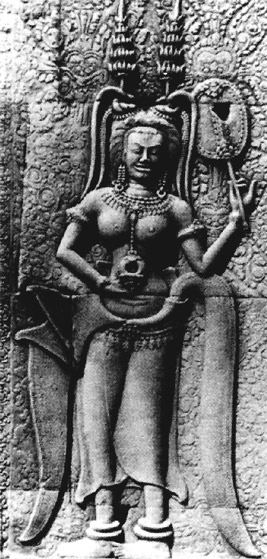Apsara (Sanskrit) comes from ap, water, air, the intermediate region; the star Virginis; the Waters considered as divinities (see Greek aphros, foam, as in Aphrodite; Latin acqua; Goth ahva; Old German aha) and sri, to run, flow, speed, glide, move, go. Hence the apsara ‘going in the waters or between the waters of the clouds’ refers to a class of female divinities. Sometimes called nymphs, they inhabit the sky, but often visit the earth; they are the wives of the Gandharvas and have the faculty of changing their shapes at will; they are fond of the water; and one of their number, Rambha, is said to have been produced at the churning of the ocean. (after Monier-Williams, 1899) |
Apsara Media for Intercultural Education was founded in 1991 by Nazir Jairazbhoy and Amy Catlin-Jairazbhoy to bring current documentary research in ethnomusicology (musical ethnology) from South Asia and Southeast Asia to the English-speaking classroom.
After ten years we expanded our boundaries. Our recent publications include studies of the ethnic minorities in Yunnan Province of SW China bordering Laos, and most recently, the Sidi African-Indians, who crossed the Indian Ocean to settle in India.
We strive for creativity of style and authenticity of content in our multimedia and print publications, extending even to fiction and 'fictive documentary'.
Our work often has an applied focus. We seek socially responsible ways to benefit the communities we study, and often engage them in the design and execution of research and documentation. Watch for future publications on
Links Amy Catlin-Jairazbhoy Nazir Jairazbhoy |

